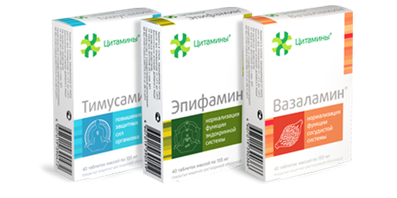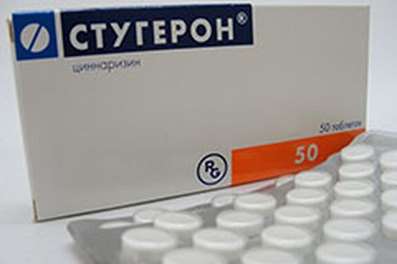Instruction for use: Irbesartan
I want this, give me price
The trade name of Irbesartan: Aprovel, Ibertan, Irbesartan, Irsar, Firmasta
Latin name of substance Irbesartan
Irbesartanum (genus. Irbesartani)
Chemical name
2-Butyl-3 - [[2 '- (1H-tetrazol-5-yl) [1,1'-biphenyl] -4-yl] methyl] -1,3-diazaspiro [4.4] non-1-en- 4-one (as a potassium salt)
Gross formula
C25H28N6O
Pharmacological group of substance Irbesartan
Angiotensin II receptor antagonists (AT1 subtype)
The nosological classification (ICD-10)
I10 Essential (primary) hypertension: hypertension; Arterial hypertension; Arterial hypertension crisis course; Essential Hypertension; Essential hypertension; Essential hypertension; Essential hypertension; Essential hypertension; Primary hypertension; Arterial hypertension, complications of diabetes; The sudden increase in blood pressure; Hypertensive disorders of blood circulation; hypertensive condition; hypertensive crises; arterial Hypertension; malignant Hypertension; Hypertonic disease; hypertensive crises; accelerated hypertension; malignant hypertension; The aggravation of hypertensive disease; Transient hypertension; Isolated systolic hypertension
I15 Secondary hypertension: Arterial hypertension, complications of diabetes; hypertension; The sudden increase in blood pressure; Hypertensive disorders of blood circulation; hypertensive condition; hypertensive crises; hypertension; arterial Hypertension; malignant Hypertension; hypertensive crises; accelerated hypertension; malignant hypertension; The aggravation of hypertensive disease; Transient hypertension; hypertension; Arterial hypertension; Arterial hypertension crisis course; renovascular hypertension; Hypertension symptomatic; Renal hypertension; Renovascular hypertension; renovascular hypertension; Symptomatic hypertension
CAS code
138402-11-6
Characteristics of the substance Irbesartan
White or almost white crystalline powder. It is slightly soluble in ethanol and methylene chloride, insoluble in water. Molecular weight 428.5.
Pharmacology
Pharmacological action - antihypertensive.
Specifically and irreversibly blocks the receptors of angiotensin II (subtype AT1). Eliminates the vasoconstrictive effect of angiotensin II, reduces the concentration of aldosterone in the plasma, reduces OPSS, postnagruzku on the heart, systemic blood pressure and pressure in the small circle of the circulation. Does not affect kinase II (ACE), which destroys bradykinin and is involved in the formation of angiotensin II. It acts gradually, after a single dose, the maximum effect develops in 3-6 hours. The hypotensive effect persists for 24 hours. With regular application for 1-2 weeks, the effect acquires stability and reaches a maximum after 4-6 weeks.
Quickly and completely absorbed from the digestive tract, the rate of absorption does not depend on the intake of food. Bioavailability is 60-80%, Cmax is determined after 1.5-2 hours. Between the dose of irbesartan and its concentration in the blood there is a linear dependence (in the range of doses of 10-600 mg). Equilibrium concentration in the plasma is achieved within 3 days after the start of treatment. Binding to plasma proteins - 96%, volume of distribution - 53-93 liters, total Cl - 157-176 ml / min, renal Cl - 3-3.5 ml / min. It is subjected to biotransformation in the liver by oxidation with the participation of the cytochrome P450 isoenzyme CYP2C9 and subsequent conjugation with the formation of inactive metabolites, the main one being irbesartan glucuronide (6%). T1 / 2 - 11-15 hours Excreted by the kidneys (20%, less than 2% of them unchanged) and liver.
Introduction to animals (rats, macaques) in high doses (more than 500 mg / kg / day) is accompanied by the development of degenerative changes in the kidneys (interstitial nephritis, tubular expansion and / or basophilic infiltration of the renal tubules, increased uric acid and creatinine in plasma) Renal perfusion. At doses exceeding 90 mg / kg / day (rats) and 110 mg / kg / day (macaques) induces hypertrophy / hyperplasia of juxtaglomerular cells.
In conditions of prolonged (2 years) administration, experimental animals in doses exceeding the MPDCH were 3 times (male rats), 3-5 times (males and female mice) and 21 times (male rats) carcinogenic. When studying other types of specific toxicity, mutagenic and teratogenic activity was not detected.
Application of Irbesartan
Arterial hypertension, nephropathy in arterial hypertension and type 2 diabetes mellitus (as part of combined antihypertensive therapy).
Contraindications
Hypersensitivity, pregnancy, breast-feeding.
Restrictions
Age under 18 years (safety and efficacy not determined).
Application of pregnancy and breastfeeding
Contraindicated in pregnancy.
The action category for fetus by FDA is D.
For the duration of treatment, breastfeeding should be discontinued (it is not known whether irbesartan is excreted into breast milk).
Side effects of Valsartan
From the nervous system and sensory organs: ≥1% - headache, dizziness, fatigue, anxiety / excitability.
From the cardiovascular system and blood (hematopoiesis, hemostasis): ≥1% - tachycardia.
On the part of the respiratory system: ≥1% - infections of the upper respiratory tract (elevated body temperature, etc.), sinusopathy, sinusitis, pharyngitis, rhinitis, cough.
On the part of the digestive system: ≥1% - diarrhea, nausea, vomiting, diarrhea, heartburn.
From the musculoskeletal system: ≥1% - musculoskeletal pain (including myalgia, bone pain, chest pain).
Allergic reactions: ≥1% - rash.
Other: ≥1% - abdominal pain, urinary tract infection.
Interaction
Diuretics and other antihypertensives. Thiazide diuretics enhance the effect. Prior treatment with diuretics in high doses can lead to dehydration of the body and increases the risk of arterial hypotension at the beginning of irbesartan treatment. Irbesartan is compatible with other antihypertensive drugs (beta-blockers, calcium channel blockers).
Potassium supplements and potassium-sparing diuretics. Increases the risk of hyperkalemia in a joint application with potassium-sparing diuretics and potassium preparations.
Lithium: a reversible increase in serum lithium concentrations or toxicity was noted while lithium was used simultaneously with inhibitors of angiotensin converting enzymes. With respect to irbesartan, similar effects have been extremely rare so far, but careful monitoring of serum lithium levels is recommended during the simultaneous use of drugs.
NSAIDs: with simultaneous administration of angiotensin II antagonists and NSAIDs (eg selective inhibitors of COX-2, acetylsalicylic acid> 3 g / day and nonselective NSAIDs), the hypotensive effect may be weakened.
As with ACE inhibitors, the combined use of angiotensin II antagonists and NSAIDs may increase the risk of impaired renal function, including the incidence of acute renal failure, and lead to an increase in serum potassium, especially in patients with renal impairment. When this combination is introduced, care should be taken, especially in elderly patients. Patients should be adequately hydrated and during the entire combination therapy and periodically after the end of the monitoring of renal function.
Hydrochlorothiazide. The pharmacokinetics of irbesartan does not change when combined with hydrochlorothiazide.
Irbesartan is metabolized mainly with the participation of CYP2C9 and to a lesser extent glucuronization. No significant pharmacokinetic or pharmacodynamic interactions were observed with combined administration of irbesartan with warfarin, a drug that undergoes metabolism with CYP2C9. Effects of such stimulants CYP2C9, as rifampicin on the pharmacokinetics of irbesartan were not evaluated.
Irbesartan does not change the pharmacokinetics of digoxin.
Overdose
Symptoms: arterial hypotension, tachycardia or (rarely) bradycardia.
Treatment: induction of vomiting and / or gastric lavage, the appointment of activated charcoal, symptomatic therapy; Hemodialysis is ineffective.
Routes of administration
Inside.
Precautions for the substance Irbesartan
With caution apply in patients with hyponatremia (treatment with diuretics, restriction of salt intake with diet, diarrhea, vomiting), in patients on hemodialysis (possibly developing symptomatic hypotension), as well as in dehydrated patients. Caution should be exercised in patients with renin-vascular hypertension due to bilateral renal artery stenosis or renal artery stenosis of a single kidney (increased risk of developing severe hypotension and renal failure), aortic or mitral stenosis, obstructive hypertrophic cardiomyopathy, severe heart failure (stage III-IV classification NYHA) and IHD (increased risk of myocardial infarction, angina pectoris). Against the background of renal dysfunction, monitoring of serum potassium and serum creatinine levels is recommended. It is not recommended for patients with primary hyperaldosteronism, with severe renal failure (no experience of clinical use), in patients with recent kidney transplantation (no experience of clinical use).

 Cart
Cart





